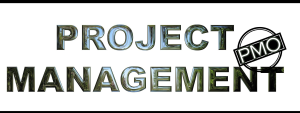
Think of your project team as a football squad. You wouldn’t put 11 strikers on the field and expect to win, right? Success also requires defenders, midfielders, and a goalkeeper, each playing their unique role, contributing their strengths to achieve a common goal. The same holds true for managing multigenerational teams in the workplace. Different generations, like different positions, contribute distinct strengths that are crucial for achieving outstanding project outcomes.
What if the key to navigating complex projects isn’t about everyone thinking the same way but about leveraging the unique abilities of each generation, just like a well-balanced sports team? When used effectively, these generational differences can be the ultimate game-changer.
Why Multigenerational Teams Are Essential:
In the same way that a football team would struggle without a balanced lineup, relying on a single generational perspective can limit a project’s potential. Multigenerational teams offer diverse viewpoints, fueling innovation and enhancing problem-solving capabilities. Each generation brings its own unique advantages: Baby Boomers provide long-term vision and institutional knowledge, Generation X delivers adaptability and pragmatism, Millennials thrive in collaboration and technology, and Gen Z offers fresh perspectives along with digital fluency.
Like a well-balanced football team, this combination allows a PMO tp manage projects with a strategic mix of experience, creativity, and innovation. The interplay between generations sparks ideas that a more uniform team might miss, providing solutions that are more comprehensive and forward-thinking.
The Risks of a One-Dimensional Team
Imagine a football team full of forwards but lacking defenders and a goalkeeper. While they may generate ideas quickly, they’ll leave gaps in risk management and long-term planning. Likewise, a project team composed of one generation may face blind spots, stifling progress and innovation. A multigenerational team provides the necessary balance to address both the risks and opportunities.

How to Harness Multigenerational Strengths
Just like in football, where different players are assigned positions based on their strengths, a multigenerational team should be structured to leverage the distinct capabilities of each generation.
1. Baby Boomers as Defenders (The Backbone of Experience)
Baby Boomers act as the defenders, offering stability and a wealth of experience. They’ve navigated multiple project cycles and understand potential risks before others even perceive them. Their long-term view anchors the team, ensuring that project decisions are aligned with overarching business strategies and avoiding unnecessary risks.
2. Generation X as Midfielders (The Adaptable Playmakers)
Gen Xers are your adaptable midfielders, balancing the creative energy of the forwards (Millennials and Gen Z) with the grounded wisdom of the defenders (Boomers). Known for their resourcefulness and problem-solving skills, Gen Xers can play both offence and defence in a project, ensuring that innovation is tempered with practicality and that timelines stay on track.
3. Millennials as Forwards (The Agile Innovators)
Millennials function like agile forwards, driving the project forward with a collaborative spirit and a strong embrace of new technologies. Their ability to innovate and adapt quickly ensures that your project stays ahead of the curve. Millennials push for progress, often questioning the status quo and offering creative solutions to longstanding problems.
4. Gen Z as the Goalkeeper (The Tech-Savvy Problem Solver)
Gen Z represents the new goalkeeper on the field. Their natural affinity for digital tools and emerging technologies allows them to spot potential challenges or opportunities that others might overlook. Gen Z’s ability to navigate AI, automation, and other cutting-edge innovations ensures that the team is well-positioned to succeed in an increasingly digital landscape.
The Synergy of the Team
Much like a football team, which relies on synergy between its different positions, a multigenerational project team thrives on collaboration between generations. When managed effectively, the diverse perspectives and work styles lead to a balanced approach that drives creative, sustainable, and well-rounded solutions. The team can seamlessly transition from long-term planning (Boomers) to problem-solving (Gen X), innovation (Millennials), and tech-forward execution (Gen Z).
Teams Win with Diversity, Not Uniformity
In project management, as in sports, success comes from a team that combines different strengths. A multigenerational team, like a well-rounded football squad, ensures that you have the right balance to tackle every challenge—whether it’s risk management, innovation, or technology integration. By leveraging the unique talents of each generation, PMOs can craft strategies that not only meet project objectives but also drive sustainable success.
